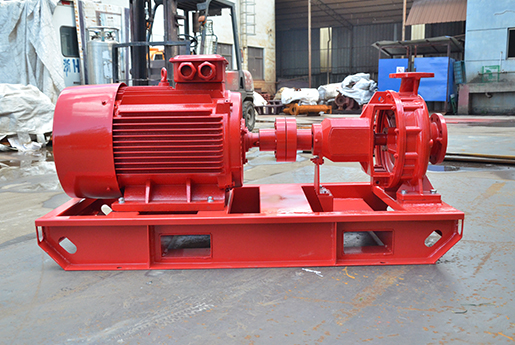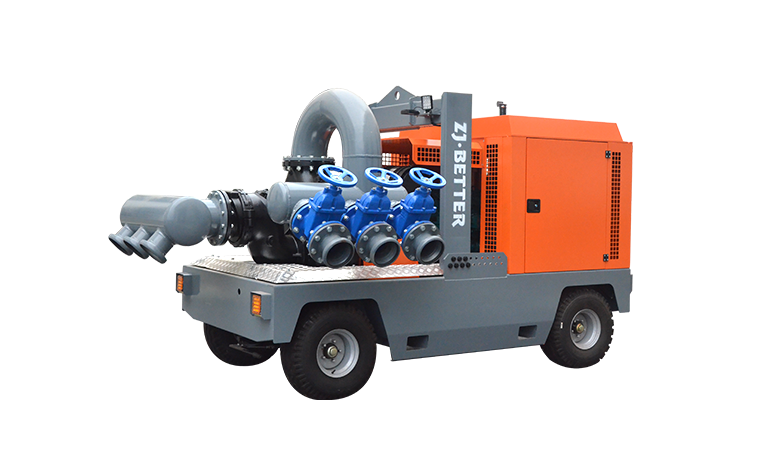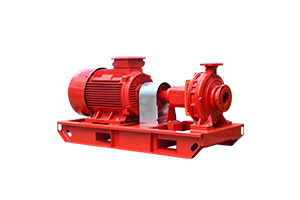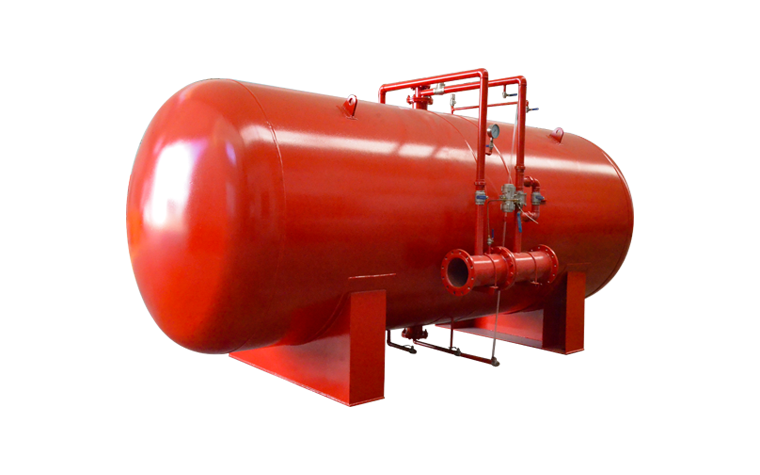-
 May 11, 2023Daily Maintenance of Fire PumpsThe maintenance and upkeep of fire pumps is essential for the safety of all commercial and residential buildings. These pumps are designed to provide pressurized water in the event of a fire, and regular maintenance ensures they are always in top working condition. This article outlines the daily maintenance routine for fire pumps, as well as the importance of regularly checking the pumps and performing any necessary repairs.
May 11, 2023Daily Maintenance of Fire PumpsThe maintenance and upkeep of fire pumps is essential for the safety of all commercial and residential buildings. These pumps are designed to provide pressurized water in the event of a fire, and regular maintenance ensures they are always in top working condition. This article outlines the daily maintenance routine for fire pumps, as well as the importance of regularly checking the pumps and performing any necessary repairs.
The first step in keeping fire pumps running efficiently is to inspect the system. This should include checking the hoses, valves, and nozzles for any signs of damage or wear. The pump should also be inspected for proper operation, and any leaks should be fixed immediately. In addition, all of the valves should be tested to make sure they are functioning properly.
Once the system has been inspected, it is important to check the pressure gauges. The pumps should be able to maintain a certain level of pressure, and the gauges will show if the pressure is too low or too high. In addition, the pressure should be checked for any unexpected drops or spikes. If the pressure is not within the correct range, it could indicate a problem with the pump or the system.
Next, the pumps should be checked for any obstructions. This could include debris, sediment, or even rust that could prevent the pump from operating properly. If any of these are found, they should be removed or replaced as soon as possible.
Finally, it is important to regularly test the system under full load. This can be done by running a test fire, which simulates a real-life fire scenario. This will help to ensure that the system can handle the demands of an actual fire.
Fire pumps are an essential part of any building’s safety system, and daily maintenance is essential for keeping them in top working condition. Regular inspections and testing should be part of any fire safety plan, and any necessary repairs should be made immediately. By following the above steps, businesses and homeowners can ensure their fire pumps are always ready to protect them in the event of an emergency.View details -
 May 10, 2023How to choose fire pump head information?Fire pumps are an essential part of any fire protection system, and choosing the right fire pump head information is critical to ensure that the system functions properly. There are a few key pieces of information that you should consider when selecting a fire pump head, such as the required flow rate, the desired pressure, and the type of pump. It is also important to understand the differences between centrifugal, vertical turbine, and end suction pumps before making a decision.
May 10, 2023How to choose fire pump head information?Fire pumps are an essential part of any fire protection system, and choosing the right fire pump head information is critical to ensure that the system functions properly. There are a few key pieces of information that you should consider when selecting a fire pump head, such as the required flow rate, the desired pressure, and the type of pump. It is also important to understand the differences between centrifugal, vertical turbine, and end suction pumps before making a decision.
The flow rate is one of the most important factors to consider when selecting a fire pump head. This is the amount of water the pump needs to move in order to effectively fight a fire. The flow rate is usually expressed in gallons per minute (GPM) or liters per minute (LPM). It is important to choose a pump head that can deliver the required flow rate and pressure for the application.
Another important factor is the desired pressure. This is the amount of pressure that the pump needs to generate in order to move the water from one point to another. Pressure is typically expressed in pounds per square inch (PSI) or bars. It is important to choose a pump head that can generate the necessary pressure for the application.
The type of pump is also important when selecting a fire pump head. Centrifugal pumps are used for high flow applications, while vertical turbine pumps are used for low flow applications. End suction pumps are best suited for applications that require a constant flow rate. It is important to understand the differences between the types of pumps and choose the one that is best suited for the application.
In summary, selecting the right fire pump head information is critical to ensure that the system functions properly. You must consider the required flow rate, desired pressure, and type of pump before making a decision. It is also important to understand the differences between centrifugal, vertical turbine, and end suction pumps. By taking the time to understand these factors and make an informed decision, you will be able to choose the best fire pump head for your needs.View details -
 May 10, 2023How to choose fire pump flow information?When selecting a fire pump, it is important to consider the required flow rate. The flow rate is the amount of water that the pump can move through the system in a given period of time. The flow rate is typically specified in gallons per minute (GPM) or liters per minute (LPM). It is important to select a pump with a flow rate that is appropriate for the size of the system and the type of fire protection that is required.
May 10, 2023How to choose fire pump flow information?When selecting a fire pump, it is important to consider the required flow rate. The flow rate is the amount of water that the pump can move through the system in a given period of time. The flow rate is typically specified in gallons per minute (GPM) or liters per minute (LPM). It is important to select a pump with a flow rate that is appropriate for the size of the system and the type of fire protection that is required.
When choosing fire pump flow information, it is important to consider the system’s requirements. This includes the number of sprinklers, the size of the fire suppression system, and the type of fire protection that is needed. The flow rate should be sufficient to meet the system’s requirements. It is important to remember that the flow rate should not be too high or too low.
When selecting a fire pump, it is important to consider the pressure rating of the pump. The pressure rating is the amount of pressure that the pump can generate when it is in operation. The pressure rating should be sufficient to meet the needs of the system. It is important to remember that the pressure rating should not be too high or too low.
In addition to the flow rate and pressure rating, it is important to consider the suction and discharge size of the pump. The suction and discharge sizes should be appropriate for the size of the system and the type of fire protection that is required. It is important to remember that the suction and discharge size should not be too large or too small.
When selecting a fire pump, it is important to consider the efficiency of the pump. The efficiency of the pump is the amount of water that it can move through the system with the least amount of energy. The efficiency should be sufficient to meet the needs of the system. It is important to remember that the efficiency should not be too high or too low.View details -
 May 10, 2023How to prolong the service life of fire pump?The fire pump is a crucial piece of equipment and is essential for proper fire protection systems. The fire pump is designed to deliver water to a fire sprinkler system or standpipe system, and it is important to maintain the pump to ensure that it is always in working order. Proper maintenance and care can extend the life of a fire pump significantly.
May 10, 2023How to prolong the service life of fire pump?The fire pump is a crucial piece of equipment and is essential for proper fire protection systems. The fire pump is designed to deliver water to a fire sprinkler system or standpipe system, and it is important to maintain the pump to ensure that it is always in working order. Proper maintenance and care can extend the life of a fire pump significantly.
Regular inspection and testing of fire pumps is key to ensuring that they will continue to operate properly. This should include visual inspection of the unit for any signs of wear and tear, along with checking the oil levels, hoses, and seals for any signs of leakage. The pump should also be tested and inspected on a regular basis to ensure that it is working properly.
It is also important to ensure that the fire pump is regularly serviced and maintained. Regular servicing should include changing the oil and filters, checking the electrical connections, and checking the impeller and other components for any wear and tear. A professional service technician should be consulted to ensure that the fire pump is in good working order.
In addition to regular inspection and servicing, the fire pump should be operated correctly and safely. The pump should not be operated at a higher pressure or flow rate than what is recommended by the manufacturer, as this can cause excessive wear and tear on the pump. The pump should also be operated in a manner that does not exceed its maximum pressure and flow rate.
Finally, the fire pump should always be stored in a clean, dry, and well-ventilated area. This will help to ensure that the pump does not become contaminated with dust and debris and that it is not exposed to extreme temperatures. By following these tips, you can help to extend the service life of your fire pump and ensure that it is always in good working order.View details -
 May 10, 2023Working characteristics of fire pumpA fire pump is a machine that is used to provide water pressure to fire hydrants and fire suppression systems. It is designed to transfer water from a water source such as a lake, river, pond, or reservoir to the fire suppression system. Fire pumps are essential components of any fire protection system and are used to ensure that adequate pressure is available to the system at all times.
May 10, 2023Working characteristics of fire pumpA fire pump is a machine that is used to provide water pressure to fire hydrants and fire suppression systems. It is designed to transfer water from a water source such as a lake, river, pond, or reservoir to the fire suppression system. Fire pumps are essential components of any fire protection system and are used to ensure that adequate pressure is available to the system at all times.
The working characteristics of a fire pump are determined by the type of pump and its design. The most common type of fire pump is the centrifugal pump, which uses an impeller to move water. Other types of fire pumps include the positive displacement and hydraulic pumps. Each type of fire pump has different working characteristics that are important for effective fire protection.
The working characteristics of a fire pump include the flow rate, pressure, and power requirements. The flow rate is the amount of water that can be pumped in a given amount of time, and it is measured in gallons per minute (gpm). Pressure is the amount of resistance the pump has to overcome to move water, and it is measured in pounds per square inch (psi). The power requirements of the pump depend on the type of pump and the flow rate it is capable of providing.
The working characteristics of a fire pump also include its performance in various conditions. Fire pumps must be able to perform in low-pressure environments and during cold weather. The pump must also be able to perform in high-pressure situations, such as when a large volume of water is needed to extinguish a fire. The pump must also be able to handle surges in pressure that occur when multiple fire hydrants are used at the same time.
The working characteristics of a fire pump are essential for effective fire protection. Properly functioning pumps are essential for ensuring that adequate pressure is available to the fire protection system at all times. Fire pumps must be regularly inspected and maintained to ensure that they are functioning properly and are able to provide the necessary pressure and flow rate to the fire protection system.View details -
 May 10, 2023How to use the fire pump reasonably?A fire pump is a device that is used to provide a reliable source of water for firefighting. It is important to use the fire pump correctly and safely to ensure that it provides an effective firefighting solution. This article will explain how to use the fire pump reasonably in order to ensure optimal performance.
May 10, 2023How to use the fire pump reasonably?A fire pump is a device that is used to provide a reliable source of water for firefighting. It is important to use the fire pump correctly and safely to ensure that it provides an effective firefighting solution. This article will explain how to use the fire pump reasonably in order to ensure optimal performance.
The first step in using a fire pump is to make sure that it is properly installed and connected to the water supply. This will ensure that the pump is able to draw water from the source and deliver it to the firefighting site. It is also important to make sure that the pump is properly maintained and serviced to ensure that it is running efficiently.
When using a fire pump, it is important to understand the flow rate of the pump. This will determine how much water can be delivered to the firefighting site at any given time. It is important to know the flow rate of the pump so that it can be used efficiently and effectively.
In addition to understanding the flow rate of the pump, it is important to understand the pressure that the pump is able to generate. This will determine how far the water can be delivered from the fire pump. It is important to ensure that the pressure is not too high otherwise it may cause damage to the equipment or the surrounding area.
Finally, it is important to use the fire pump in a safe and responsible manner. This includes making sure that the pump is operated correctly and that it is not used for any other purpose than for firefighting. By using the fire pump reasonably, it will help to ensure that it is able to provide effective firefighting solutions.View details

.png)
.png)

.png)


